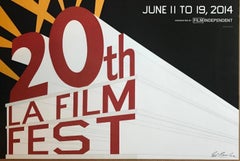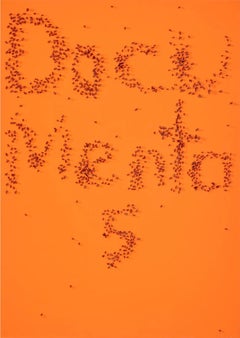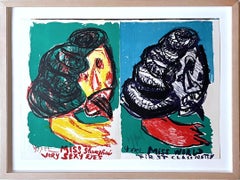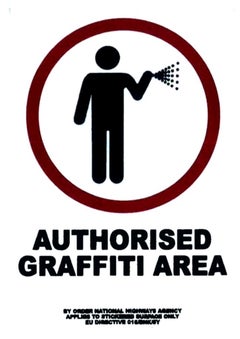Alpha 137 Gallery Prints and Multiples
2010s Op Art Abstract Prints
Screen
2010s Contemporary Abstract Prints
Offset, Lithograph
1970s Pop Art Abstract Prints
Screen
1960s Surrealist Abstract Prints
Lithograph
1980s Abstract Expressionist Abstract Prints
Graphite, Screen
Early 2000s Street Art Figurative Prints
Digital, Offset
1960s Abstract Animal Prints
Lithograph, Offset, Pencil
1970s Surrealist Figurative Prints
Mixed Media, Pencil, Lithograph, Screen
1960s Surrealist Abstract Prints
Mixed Media, Engraving, Screen
Early 2000s Abstract Abstract Prints
Etching, Aquatint
2010s Pop Art Animal Prints
Ceramic
Early 2000s Realist Portrait Prints
Ink, Postcard, Lithograph, Offset
1990s Contemporary Abstract Prints
Lithograph, Screen
1970s Abstract Abstract Prints
Pencil, Lithograph
Early 2000s Pop Art Figurative Prints
Screen
1980s Pop Art Abstract Prints
Offset, Lithograph
1980s Abstract Abstract Prints
Etching, Aquatint, Lithograph
1970s Abstract Expressionist Abstract Prints
Permanent Marker, Lithograph, Offset
1970s Abstract Expressionist Abstract Prints
Lithograph, Offset
1990s Pop Art Landscape Prints
Lithograph, Offset
1960s Abstract Abstract Prints
Screen
1980s Contemporary Abstract Prints
Mylar, Lithograph
1960s Pop Art Figurative Prints
Lithograph, Offset
1960s Abstract Expressionist Abstract Prints
Lithograph
1980s Realist Landscape Prints
Lithograph
1980s Contemporary Figurative Prints
Woodcut
1990s Minimalist Abstract Prints
Vellum, Lithograph
1980s Color-Field Abstract Prints
Acrylic, Monotype, Screen
1980s Abstract Expressionist Portrait Prints
Permanent Marker, Lithograph, Offset
1960s Modern Figurative Prints
Lithograph
1970s Pop Art Abstract Prints
Lithograph, Offset
1980s Pop Art Figurative Prints
Lithograph, Offset
1970s Pop Art Abstract Prints
Lithograph, Offset
Early 2000s Contemporary Animal Prints
Monotype
1970s Abstract Expressionist Abstract Prints
Lithograph
1980s Pop Art Abstract Prints
Lithograph, Offset
1970s Pop Art Figurative Prints
Mixed Media, Acrylic, Pencil, Stencil
2010s Contemporary More Art
Paper, Ink, Mixed Media, Lithograph, Offset
2010s Pop Art Abstract Prints
Archival Pigment
1990s Contemporary Landscape Prints
Acrylic, Graphite, Lithograph, Monoprint, Mixed Media
1960s Abstract Expressionist Abstract Prints
Lithograph, Pencil
1960s Pop Art Abstract Prints
Lithograph
1960s Modern Abstract Prints
Lithograph, Offset
1960s Abstract Abstract Prints
Metal
2010s Pop Art Abstract Prints
Permanent Marker, Lithograph, Offset
2010s Contemporary More Art
Mixed Media, Lithograph, Offset
1980s Pop Art Abstract Prints
Ink, Lithograph, Offset
1990s Contemporary Figurative Photography
Photographic Paper
1970s Abstract Expressionist Abstract Prints
Lithograph
Early 2000s Contemporary Portrait Prints
Lithograph, Offset
2010s Performance Portrait Prints
Lithograph, Offset
Early 2000s Abstract Abstract Prints
Lithograph, Offset
Early 2000s Pop Art Landscape Prints
Lithograph, Offset
1980s Abstract Figurative Prints
Lithograph, Offset
1950s Pop Art Figurative Prints
Lithograph, Offset
1970s Pop Art Figurative Prints
Paper, Ink, Mixed Media, Board, Pencil, Lithograph, Offset
1960s Surrealist Figurative Prints
Plastic, Mixed Media, Board, Pencil, Lenticular
1980s Pop Art Figurative Prints
Screen
Early 2000s Pop Art More Art
Paper, Ink, Mixed Media, Lithograph, Offset
1970s Pop Art Abstract Prints
Mixed Media, Graphite, Lithograph, Offset




